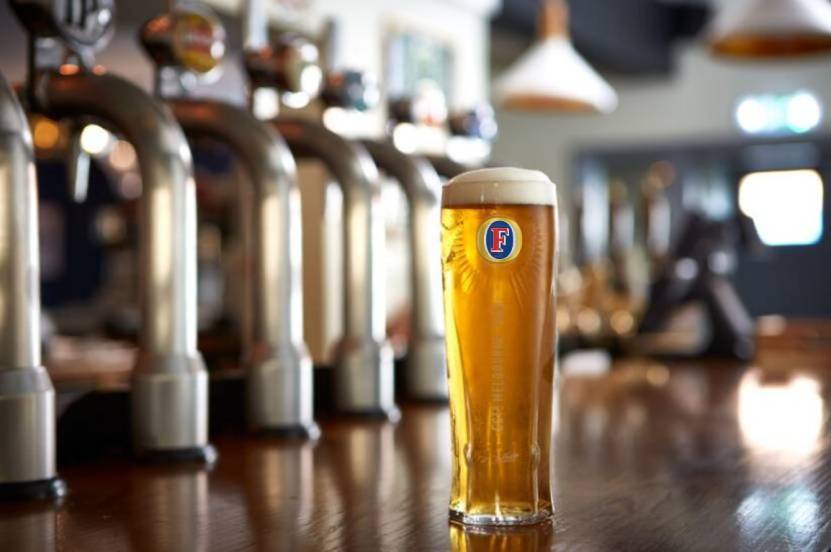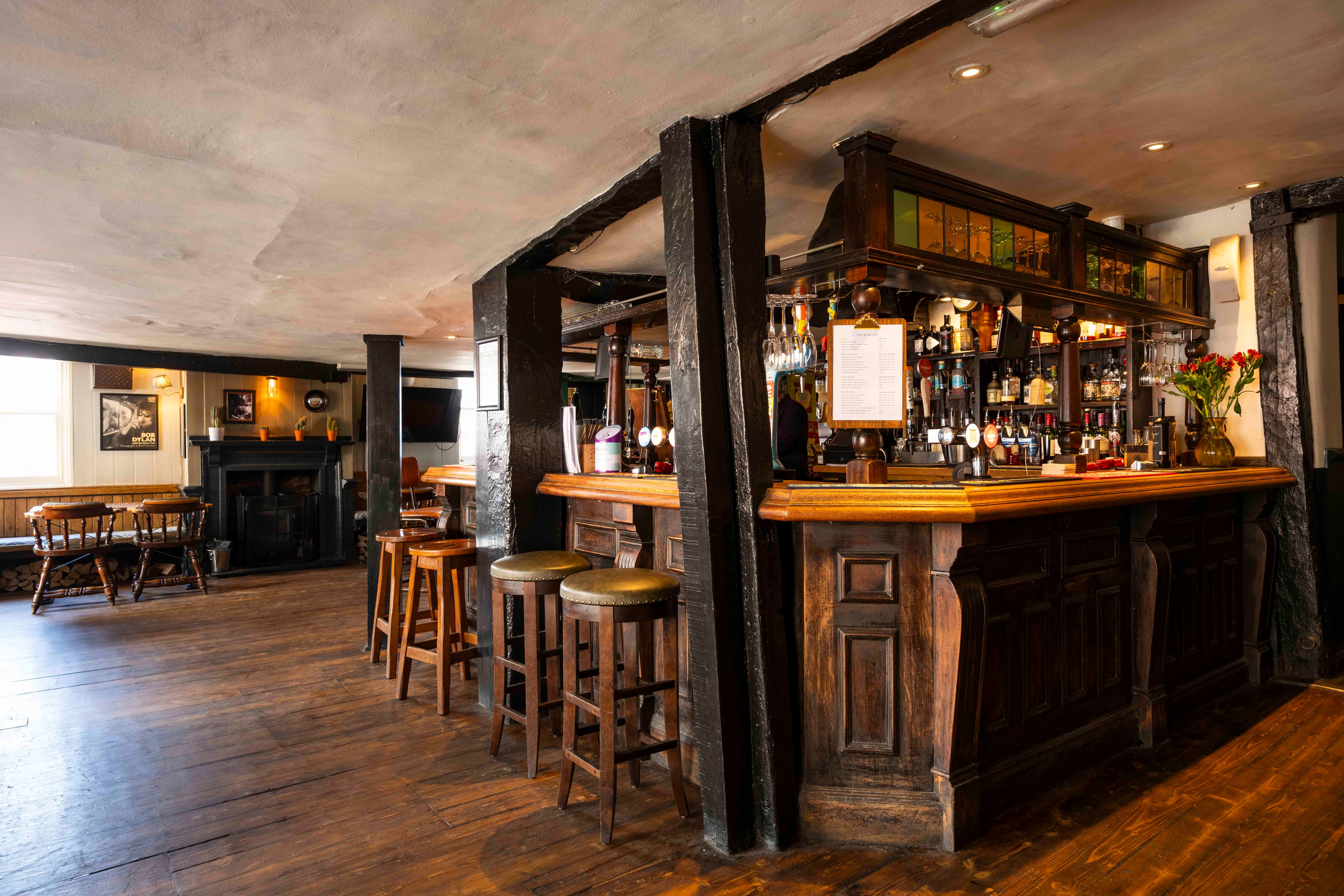The first ever law to regulate food and drink, the Assize was introduced in the 13th Century. It set a maximum price, according to ingredients and equipment used, to prevent brewers profiteering from their beer, which back then was primarily a source of nourishment, a ‘liquid bread’ to sustain you during a tough day in the fields.
This, as Flett points out, was before the capitalist market had taken hold, and by the 17th Century the law had changed to allow brewers to charge whatever was ‘convenient’.
Since then, drinkers have feared the watering of workers’ beer, and in recent years we’ve seen sweeping reductions in ABVs. Foster’s is not alone, but it’s singular in having had its strength cut twice in two years – as recently as 2023 it was 4%.
It was also in 2023 that Carlsberg Pilsner came down from 3.8% to 3.4%, leading the rush to get into the new duty band for beers between 1.2% and 3.4%. Carlsberg said the move would remove 56m units of alcohol from the UK drinks market.
This would, of course, give the decision a positive spin and, hopefully, appease the public health lobby to some extent by sending a message that the drinks industry isn’t just about chucking more alcohol down people’s throats. Decisions are driven by maximising profit and, as volumes decline, lower ABVs can improve margins.
Heineken’s stated rationale for weakening Foster’s is, firstly, to “realise value”. I take that to mean making a product that’s losing sales more profitable. The cost saving will be considerable.
Big worry
Add on the draught relief and a brewer pays £8.42 per litre of pure alcohol for a beer of 3.4% compared to £19.08 for a beer of 3.7%. And don’t forget to take off the duty on the 0.3% cut, too. It’s also possible that the ingredients will be cheaper in a weaker beer.
Grolsch is another example. When it was relaunched in the UK by Asahi as recently as 2020 it was as a 4% product that was already a far cry from the 5% premium lager we used to drink in the 1990s, and it’s an even further cry today having also come down to 3.4%.
Ales, too, including Heineken’s John Smith’s and Greene King IPA, are now 3.4%, and for those of us in Sussex who enjoyed a pint of Dark Star Hophead it came as a shock this year when its new owner, Asahi again, dropped one of the best of modern beers to the same strength.
Arguably, cask ale drinkers are more sensitive to all this than lager drinkers. You’ve no doubt watched impatiently from behind the pumps as gentlemen of a certain age lean forward to squint at the clips. Mostly, they’ll be checking the ABV (and before that, it was the Original Gravity).
If the tabloid newspapers are to be believed, though, lager drinkers still don’t like their beer being watered down. The big worry is they will pay the same for a weaker pint, a scam that’s been called ‘drinkflation’.
You seldom hear wine drinkers ask how strong a wine is, even though a ‘full-strength’ wine can vary between 8% and 14%
Heineken, however, says in difficult times the new Foster’s will create a more competitive price point on the bar, suggesting it will be passing on at least some of the money saved to publicans and their customers.
That may well be true in the company’s tied estate, Star Pubs, but outside of that it won’t have much control.
Another reason for reducing strength is that there is a consumer trend towards lower alcohol drinks and, through giving lager drinkers a weaker option, potentially a positive impact on the nation’s health.
While duty savings are the main driver behind the downward pressure on ABVs I don’t think claims like these are entirely spurious. There’s no doubt a lot of people are consciously choosing to drink less alcohol, and that doesn’t simply mean they’re abstaining.
Many are looking to keep drinking and knock a few units off their consumption, without counting exactly nor even announcing that they’re cutting down.
Quality beer
This is hardly a typical example, but when I was researching my book, Beer Breaks in Britain (only 40 shopping days to Christmas), visiting 600 pubs, bars and taprooms around the country in the space of seven months, the lower ABVs were a necessary go-to if I was going to get through the day standing up.
I especially looked for the 3.4% cask ales. Quality varied greatly, but the good ones I’d continue to choose in less distressed situations – Rooster’s Buckeye, for instance, if you want a recommendation.
This isn’t so surprising when you know that two of my favourite pints, going back over many years, have been 3.5% brews. Fuller’s Chiswick Bitter, no longer available on cask, sadly, was my staple lunchtime beer when I worked in Croydon, while today I’ll nearly always go for Burning Sky Plateau, a modern, hoppy, pale, when I see it in Brighton.
You’d think it would be sensible to drop Plateau’s strength to 3.4%. Surely it won’t make any difference. But it says something about the principles of the Sussex brewery’s founder and head brewer, Mark Tranter, that he hasn’t done that, and it gives me even more confidence in the quality of the beer.
And quality is surely the important question, here. Psychoactive effects aside, alcohol helps punch through the flavours and to give body to a beer. I always argued the former 2.8% duty threshold was too low and, with the possible exception of one of the Kernel Table Beers, I’ve never liked any of the beers brewed to that ABV. It’s very hard to make a good beer at 2.8%.
Beer drinkers are too hung-up on ABVs, though, I reckon. You seldom hear wine drinkers ask how strong a wine is, even though a ‘full-strength’ wine can vary between 8% and 14%. Obviously, if you’re in for a session, you’ll want to pace yourself. But if that 3.4% beer is good enough, that’s your problem solved, and you don’t have to settle for something that’s second-best.
If the quality’s there, lower ABVs should be a win for everyone, including the health lobby. Perhaps that should be the job of a new Assize of Ale.




